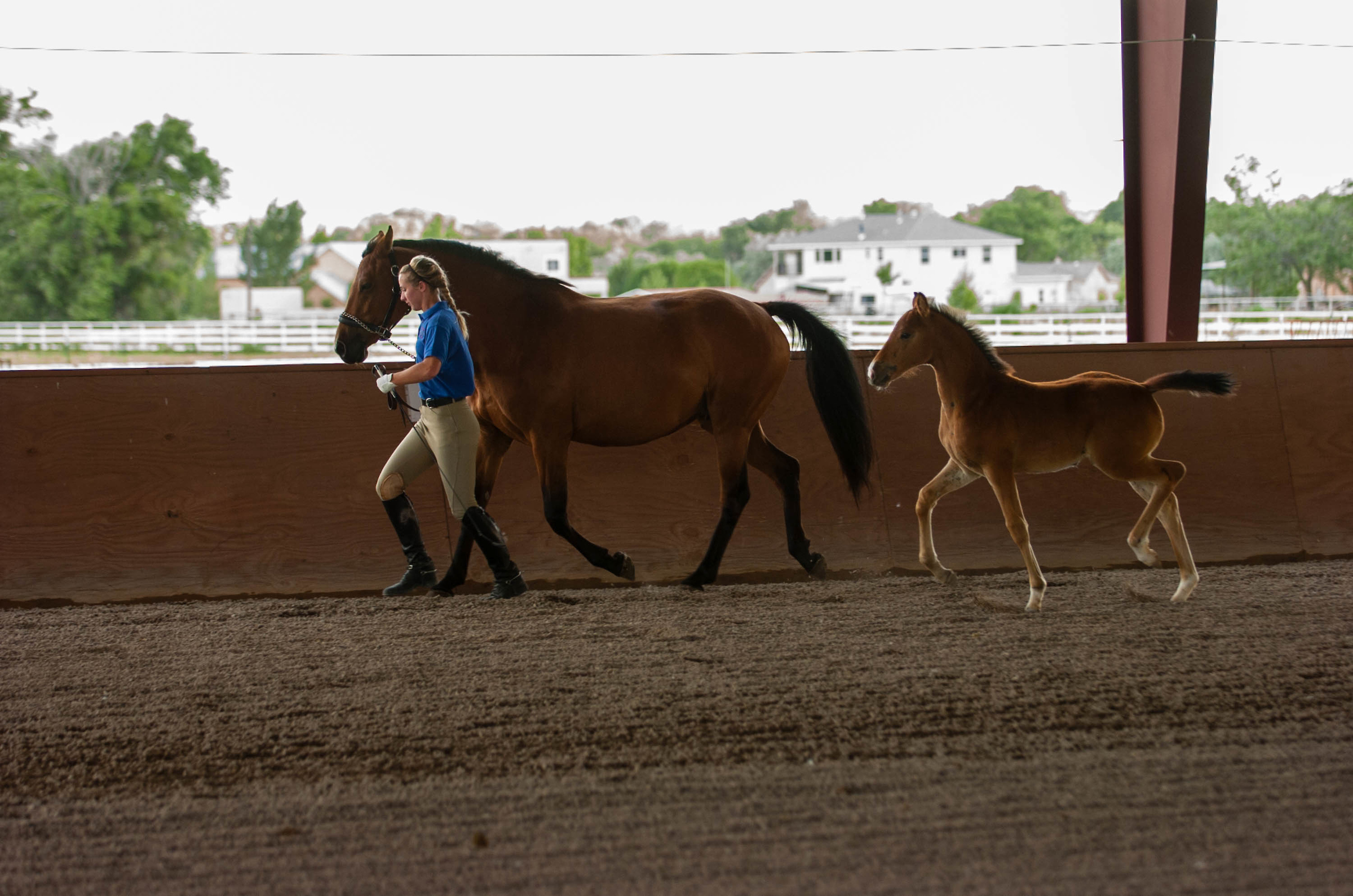Q: I am looking at foals and weanlings. I am told that some are bred for national dressage competition and some for the higher international levels. I am confused. What do I look for at each level?
——Name withheld by request
A: You have posed a question that requires clarification before answering. I assume you intended “national” to refer to those levels of dressage ranging from Training through Fourth Level, and the term “international” to indicate Prix St. Georges through Grand Prix. For the sake of argument, and as a matter of interest, there certainly can be other interpretations. For example, many fine young horses who participate in our U.S. program may show good success in the 4-,5- and 6-year-old classes but still not be of the highest quality to be chosen to compete at the World Young Horse Championships. In this sense, one could say, at this stage of life, a particular young horse was of national quality rather than of international viability. To further this line of thinking, we are all certainly aware that not every FEI-level dressage horse is of the quality to successfully compete against the best in the world of this level.

Now, let’s proceed to the question. It’s my thinking that most conscientious warmblood breeders have the intent to breed the very best horse possible. I don’t believe that anyone would start by planning to produce an animal that was only intended to be average or just so-so in physical ability and trainable character. So, in this respect, I am somewhat in disagreement with your statement that certain breeders deliberately breed horses for national levels while others breed with international levels in mind. There is often a sizeable variation between what the breeder plans and hopes for versus the actual outcome when the foal is born and/or matures. Much of this variance depends on the breeder’s knowledge and judgment, but almost equally, the outcome can be a result of luck.
My first step in searching for the best foals with a prognosis of future dressage quality is to find the breeders who use the most desirable and proven modern warmblood bloodlines. Personally, I am an advocate of some Thoroughbred blood in a good dressage horse, and this is often present in today’s most popular warmblood pedigrees. Conformation, type, correctness of bone and movement, athletic ability and balance are the criteria for judging a foal. Easier said than done! Developing a good eye to recognize and compare these characteristics among foals requires experience and guidance. I would recommend that an inexperienced person seeking to find a good foal make use of existing opportunities to educate himself, such as attending breeding-stock approvals and prominent breed competitions such as the ones at Devon, as well as gain the advice of impartial experts who are familiar with foals and their development. It is often most helpful to see a foal between the ages of 3 to 5 months who is still with its dam. After weaning, many foals progress through awkward stages and become more difficult to judge. The most spectacular foals are easily identified. The talent is in recognizing the less-obvious good ones.
Just as the good breeder must study and plan for his desired offspring, knowing that the final outcome is beyond his control, the person who selects and purchases a foal must also be willing to accept some degree of this same risk. There is great joy and opportunity, however, when the stars align and an exceptional horse develops.
This article first appeared in the January 2012 issue of Dressage Today magazine.
Dietrich Felgendreher
is a U.S. Equestrian Federation (USEF) sport-horse breeding judge and a U.S. Dressage Federation (USDF) gold medalist. He is currently on the board of the Oldenburg NA registry. Based in central Kentucky, he operates Holly Oak Farm (hollyoakfarmky.com).











